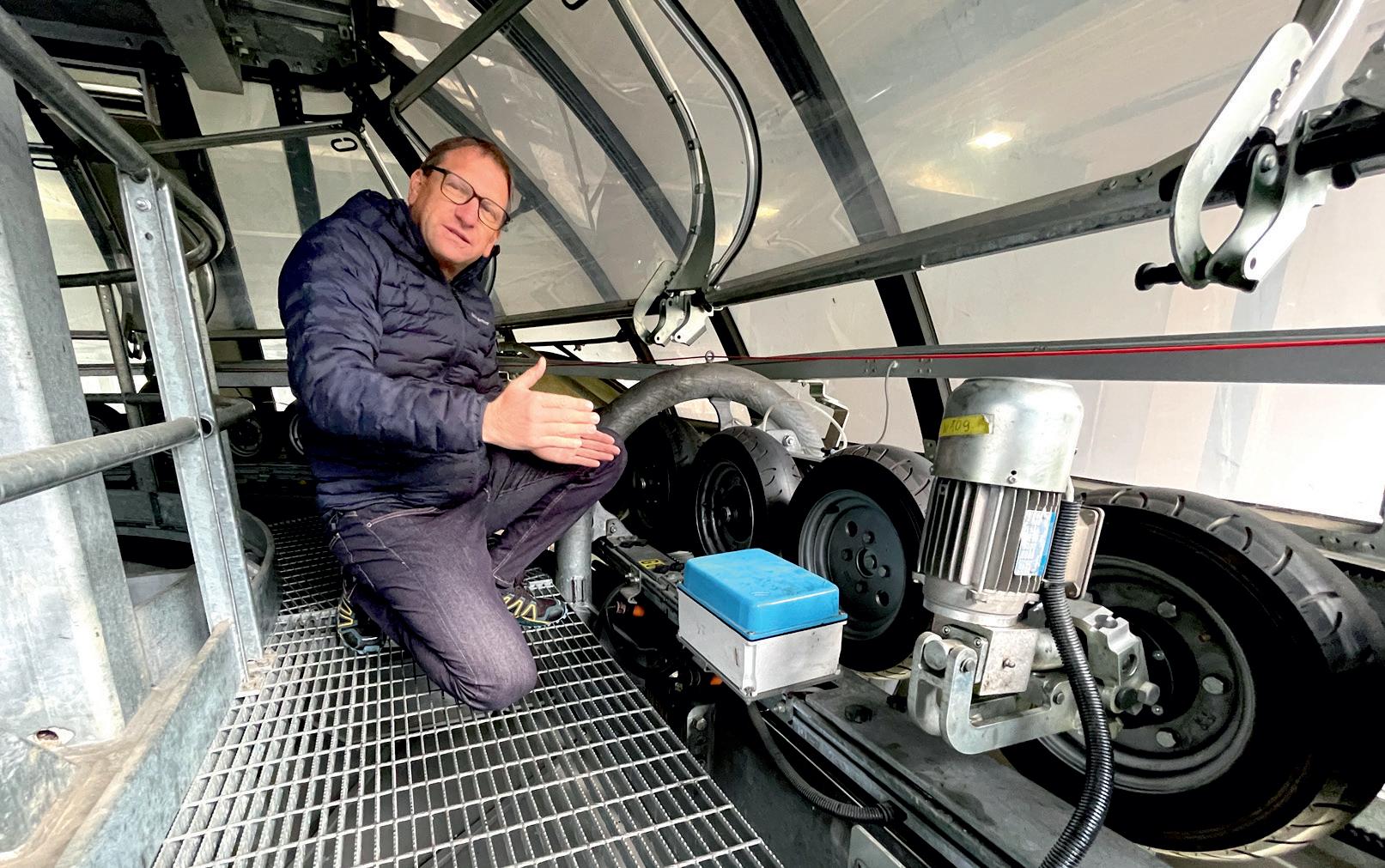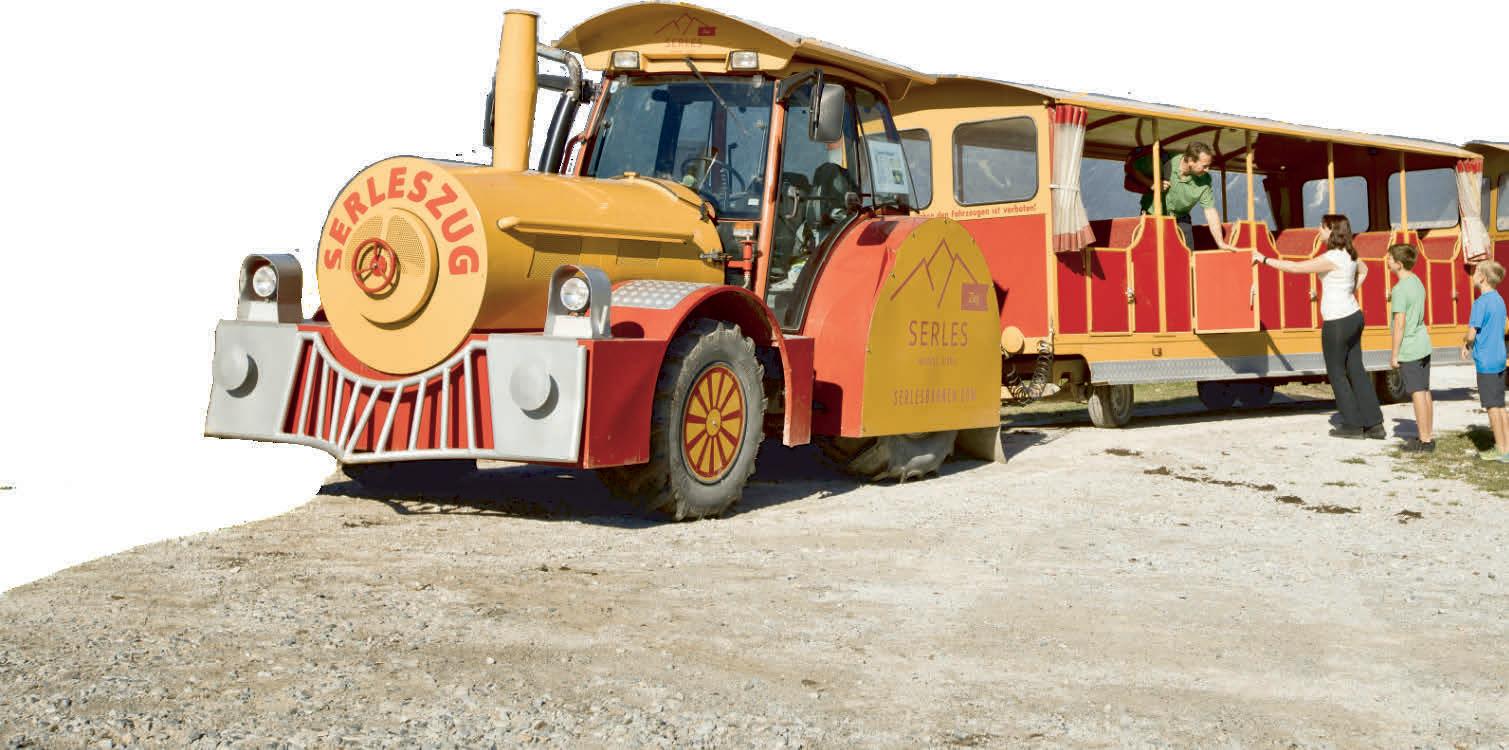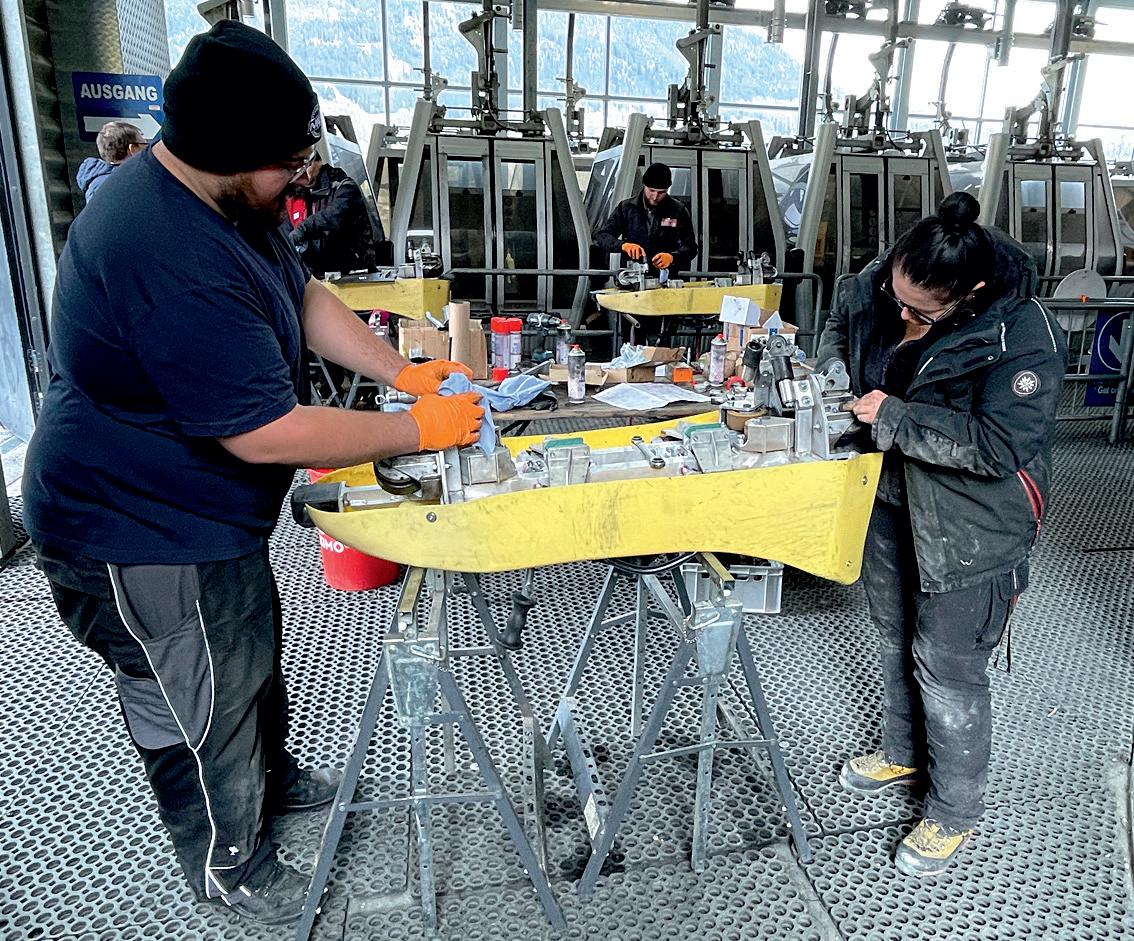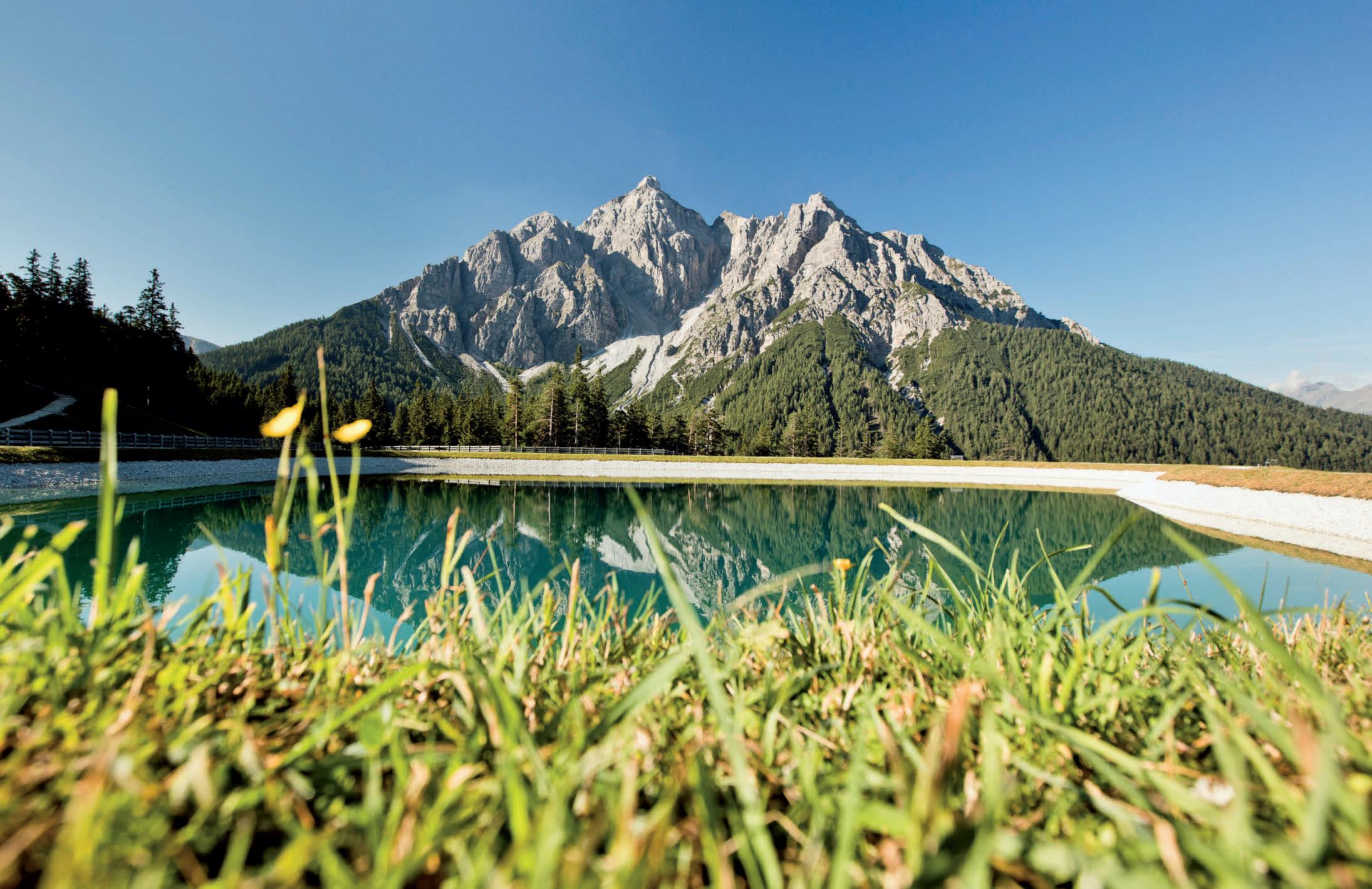
3 minute read
OVERHAUL AND INSPECTION AT THE SERLESBAHNEN CABLE CAR
Every cable car has to be overhauled and inspected once a year. This inspection is carried out according to precise rules, is very time-consuming and is strictly controlled by the authorities.
WHY ARE THE SPECIFICATIONS AND RULES SO STRICT?
Franz: The top priority is passenger safety. A cable car is a means of public transport which a concession has to be regularly applied for. We have an obligation to ensure continuous service. The provisions are regulated in a separate cableway law.
WHAT IS DONE DURING AN OVERHAUL AND INSPECTION?
Franz Gleirscher erklärt, wie die Position jeder Kabine mittels Sensoren und moderner Technik exakt überwacht wird, damit ein reibungsloser Betrieb der Seilbahnanlage möglich ist.
Franz Gleirscher explains how the position of each gondola is monitored precisely using sensors and modern technology to ensure the cable car system runs smoothly.
Atrip up the mountain by cable car is an experience every time. As passengers, we assume that everything will run smoothly. A look behind the scenes at the Serlesbahnen cable car with Managing Director Franz Gleirscher and Operations Manager Ing. Albert Albenberger shows that this requires a great deal of knowledge and commitment from the employees and a lot of technical expertise
WHAT DOES A ‘LIFT OPERATOR’ ACTUALLY DO WHEN THE CABLE CAR IS CLOSED?
Franz Gleirscher: When the cable car is closed, an overhaul and inspection is usually on the agenda. This is a complex undertaking that is carried out strictly according to the manufacturer’s specifications and the cableway authority’s rules, and is also checked by them. All parts of the cable car are inspected, checked, lubricated and replaced if necessary.
Albert Albenberger: The term ‘lift operator’ certainly does not do justice to the comprehensive skills and huge responsibility that cable car employees have. A cableway technician is an apprenticeship with three and a half years of training. There are also HTL (Höhere Technische Lehranstalt) and university courses for the cableway industry.
Albert: A cable car is a very complex system. The mechanical and electronic components are only partially visible to the guests. On the towers, for example, we have 208 sheaves, which the steel rope is guided over, each 46 cm in diameter. They are exposed to great stress from the steel rope and the weather. During the inspection, we go to each tower, lift up the steel rope and check the sheaves individually. We check the bearings, the fastening bolts, the condition of the sheave and the rubber that the steel rope runs on. If something isn’t right, the sheave is replaced. Every two years, the complete sheave assembly, i.e. the mechanism to mount the sheaves on the tower, is removed, disassembled in the workshop and reassembled. In the stations we have another 32 sheaves and 200 tyres that accelerate and decelerate the gondolas.
WHICH ARE ALSO CHECKED?
Franz: Yes. Sensors are fitted to each sheave and tyre in the stations to ensure that the steel rope runs accurately and that each gondola is in the correct position. The exact place where the gondola is hooked onto the rope is measured. In daily operation, the electronics check every time they enter or leave the station to make sure everything is in order with the gondola. So it’s pretty complex.
HOW IS THE STEEL ROPE CHECKED?
Franz: The rope is subjected to a monthly visual inspection. In addition, a magnetic inductive testing procedure is applied at regular intervals. As a result, any material changes can be detected immediately, even on the inside. We only changed the rope last year. The 46 mm thick rope is a special design that is adapted to our system.
Albert: We do 38 circuits a day. That means we carry 1,200 gondolas per day. The rope clamp for each of the 32 gondolas is opened and closed 150 times per day. During the overhaul and inspection, we disassemble each rope clamp, check it and reassemble it.
WHAT ELSE DOES THE OVERHAUL AND INSPECTION INCLUDE?
Franz: One key point is the cable car’s drive and brakes. In addition to the electric main drive, there is an emergency drive with a diesel unit. This is constantly maintained in order to be ready for use at any time.

Albert: Braking and start-up tests still have to be completed successfully before the inspection is finished. For this, the gondolas are loaded with weights until the maximum load of six tonnes in total is reached. Braking (normal stop, fast stop, emergency stop) and starting must work properly in this extreme situation.
Franz: This year we are also changing the gearbox. This is necessary after 40,000 operating hours. A crane is required for this and we have to open the roof.

DOES THE SUMMER TOBOGGAN RUN NEED AN OVERHAUL AND INSPECTION?

Franz: Safety is also the top priority on the summer toboggan run. After all, there are up to 1,200 guests per day on the toboggan run in summer. The rails and anchorages are checked in spring. The 105 toboggans are disassembled and inspected closely. We pay particular attention to the brakes and wheels. Each toboggan is subjected to a brake test and speed measurement by an expert. 40 km/h is the maximum speed. The entire facility is strictly controlled and also requires official approval.
THAT ALL SOUNDS LIKE A LOT OF WORK.
Franz: Yes. This year we started with the overhaul and inspection at the beginning of April and need until midMay. So we will be ready just in time for the opening of the hiking season.









